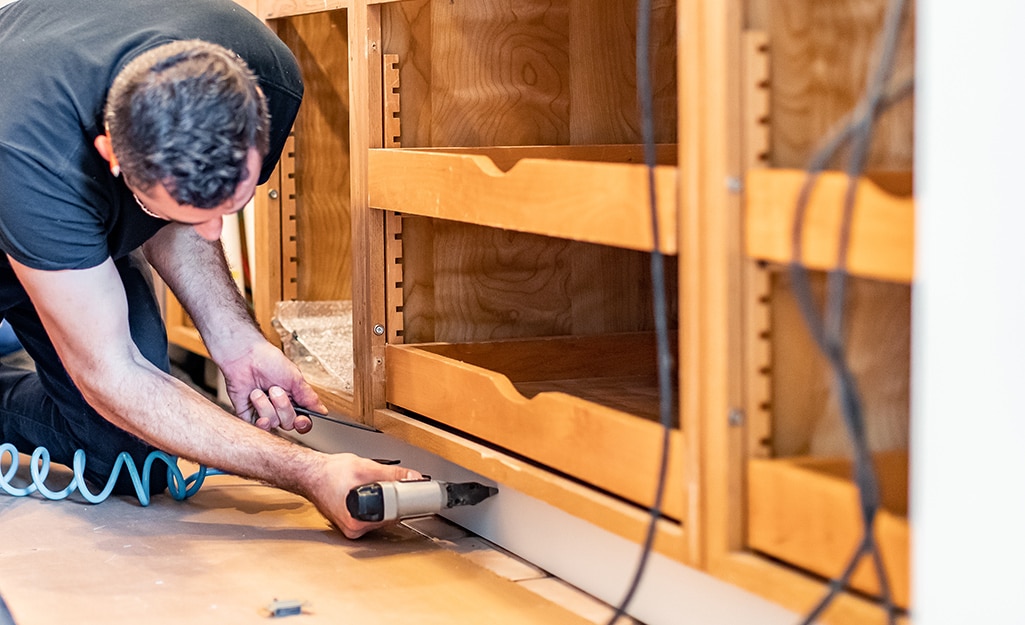Table of Contents
Installing kitchen cabinets can be a rewarding yet intimidating task, especially for beginners. With the right guidance and preparation, you can transform your kitchen space without professional help. This guide aims to provide a step-by-step approach to installing kitchen cabinets, making the process as smooth as possible.
Planning Your Cabinet Layout
The first step in any cabinet installation project is planning. Measure your kitchen space meticulously and sketch out a layout that includes the dimensions of each cabinet. Consider the work triangle concept, which positions the sink, stove, and refrigerator in a triangular layout for enhanced productivity.
Having a clear plan will prevent costly mistakes down the line. When selecting your cabinets, consider options that offer durable and stylish cabinetry. This will not only enhance the aesthetic appeal of your kitchen but also ensure long-term functionality and value.
Preparing the Space
Clear out your kitchen and remove any existing cabinetry. Use a stud finder to locate the wall studs, marking their positions with a pencil. These will be your anchor points for mounting the cabinets. Make sure the walls are even; if not, use shims to level them out.
Helping Hands
If you find the entire process overwhelming, don’t hesitate to ask for help from friends or family members. Installing kitchen cabinets can be much more manageable when you have an extra pair of hands to assist you. Plus, it can make the experience more enjoyable and less stressful.
Gathering Tools and Materials
Before diving into the installation, gather all the necessary tools and materials. You’ll typically need a drill with drill bits, a level, a stud finder, measuring tape, shims, screws, and a pencil. Lay everything out in your workspace to ensure you have easy access during the installation process.
Consulting with Experts
If you encounter any issues that you are unsure how to resolve, consider consulting with a professional. A quick consultation can provide insights that save you time and prevent potential errors. Many home improvement stores offer expert advice and even workshops to help homeowners with DIY projects.
Hanging the Upper Cabinets First
It’s generally advised to install the upper cabinets before the lower ones to avoid working over them. Start by marking a level line on the wall where the bottom of the upper cabinets will sit. Attach a ledger board along this line to support the cabinets’ weight during installation.
Drill pilot holes through the cabinet backs and secure them to the wall studs. Make sure to check for level frequently to ensure accuracy. Once the cabinets are in place, remove the ledger board.
Installing the Lower Cabinets
For the lower cabinets, begin by placing them in their designated positions. Use shims to make sure they are level both horizontally and vertically. Anchor them to the wall studs similarly to the upper cabinets, ensuring they are securely fastened. Once all the lower cabinets are installed, double-check their alignment and make any necessary adjustments before proceeding to the final steps.
Securing the Countertop
With the lower cabinets in place, you can now secure the countertop. Depending on the material, you may need special adhesives or screws to attach it securely. Make sure the countertop is level and aligned with the walls before securing it permanently.
Final Touches
With the cabinets and countertop securely in place, it’s time to add the final touches. Install the cabinet doors, drawers, and any hardware like handles or knobs. Adjust the hinges to ensure that the doors open and close smoothly. Take a moment to inspect your work, ensuring everything is level, secure, and functional. Congratulations, you’ve just installed your kitchen cabinets!
Maintaining Your Cabinets
Once your cabinets are installed, proper maintenance is imperative to ensure their longevity. Regularly check for any loose screws or hardware and tighten them as necessary. Clean the cabinets with appropriate cleaners to keep them looking new. This ongoing care will ensure that your kitchen remains functional and stylish for years to come.
Installing kitchen cabinets is a project that requires careful planning, the right tools, and some elbow grease. By following this step-by-step guide, even a beginner can achieve professional-looking results. Remember, the key to a successful installation is patience and precision. Happy remodeling!









